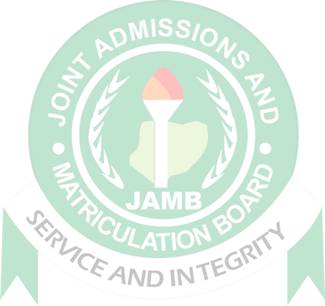
Biology
Paper 1 | Objectives | 50 Questions
JAMB Exam
Year: 1986
Level: SHS
Time:
Type: Question Paper
Answers provided
FREE
No description provided
Feedbacks
This paper is yet to be rated

Paper 1 | Objectives | 50 Questions
JAMB Exam
Year: 1986
Level: SHS
Time:
Type: Question Paper
Answers provided
No description provided
This paper is yet to be rated
Good jobs available to people without a college degree, how to get good job without a college degree?
A guide to passing your exams without studying hard, how to pass any test and top your class
Effective ways of coping with exam stress and test anxiety which is supported by Science
| # | Question | Ans |
|---|---|---|
| 1. |
Viruses are regarded as non-living because they A. can niether reproduce asexually nor sexually B. cannot survive in their respective enviroments C. do not possess characteristics that can be transmitted from one generation to the next D. can neither respire nor excrete |
D |
| 2. |
Which of the following pairs are fully adapted to terrestrial life? A. Ferns and algae B. Ferns and mosses C. Bryophytes and flowering plants D. Flowering plants and conifers |
D |
| 3. |
Which of these animals is radially symmetrical? A. squid B. Hydra C. Snail D. Cockroach |
B |
| 4. |
Which of the following has cones? A. Angiosperms B. Gymnosperms C. Pteridophyte D. Bryophyte |
B |
| 5. |
For effective functioning of a bird's quill feather, hooks fit on the ridge of the A. Vane B. rachis C. barbules D. barbs |
C |
| 6. |
Which of the following is NOT true of spirogyra? A. Reproduces by conjugation B. Reproduces by fragmentation C. Consist of branched filaments D. Consist of unbranched filaments |
C |
| 7. |
Which of the following lacks chaetae, tentacles and antennae? A. Snail B. Crab C. Millipede D. Earthworm |
C |
| 8. |
Incomplete metamorphosis occurs in the A. butterfly B. grasshopper C. mosquito D. housefly |
B |
| 9. |
Fishes are cold blooded because their body temperature is A. constantly low B. constantly high C. dependent on that of their surroundings D. regulated at will |
C |
| 10. |
When the original king and queen of termites die, they are replaced by A. the king and queen of another colony B. some adult reproductives from the same colony C. some adult workers which are specially fed breed D. developing nymphs nurtured as secondary reproductives |
B |
Preview displays only 10 out of the 50 Questions